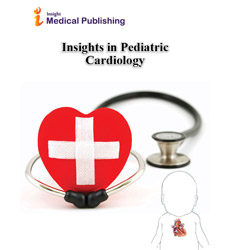Abstract
Single day Pattern of Cases reported to a Busy Paediatric Echocardiography Laboratory of a Tertiary care Hospital in Bangladesh.
Aim To see the pattern of various types of heart diseases in children reported in a single day in a busy pediatric cardiology outpatient and echocardiography department. Background: Congenital heart disease is a leading cause of morbidity andmortalityinchildren.This studywas conductedtoseethedisease pattern in children reported to a busy cardiac center in Bangladesh from acrosscountry.Thisisasingledayhospitalbasedobservationalstudy.All patients were examined clinically and with chest X-Ray. ECG was done where indicated. Final diagnosis was made usingEchocardiography. All data were collected from Echocardiography laboratory at the end of that day.While compiling this report, a pattern was found among patients and since on that particular day, a lot of patients came from different parts ofthecountry,representingthedemographicofthewholecountry,the author decided to publish this experience. Methods and findings This was a single day survey of cases reported to a pediatric cardiac outpatient department of a tertiary care hospital in Bangladesh. All patients with suspected or confirmed congenital heart diseases were included in thisstudy. Out of 66 patients, 69.70% were male and 30.31% were female. Twenty five (41.66%) cases were in one month to one year age group, 21 (35%) inmorethanoneyearagegroup,13(21.66%)inmorethan5yearsage group,andseven(11.66%)inlessthanonemonthagegroup.Atrialseptal defect (ASD) was seen in 10 (15.16%) cases, ventricular septal defect (VSD) in nine (13.36%) cases, patent ductus arteriosus (PDA) in eight (12.13%) cases,TetralogyofFallot in 3.03%cases. Down syndrome was present in two (3.03%) cases, congenital rubella syndrome and Cruzon syndrome in one (1.51%) case. The most common intervention was the deviceclosureofPDA(7.57%)andVSDclosureandPDAligationwerethe most common surgical procedure. Most of the cases (43.93%)were kept in follow up, surgery was advised for nine (13.63%) cases and catheter intervention was advised foreight(12.13%) cases.Eight(12.13%) cases were discharged from followup as they cured spontaneously. Conclusion Pattern of disease seen in a single day survey in a busy outpatient clinic showed similar pattern of other long-term studies. Most of the patients were kept in follow up as spontaneous cure may be achieved insome cases afterfollow-up.
Author(s):
Nurun NaharFatema
Abstract | PDF
Share this

Google scholar citation report
Citations : 5
Insights in Pediatric Cardiology received 5 citations as per google scholar report
Insights in Pediatric Cardiology peer review process verified at publons
Abstracted/Indexed in
- Google Scholar
- Secret Search Engine Labs
Open Access Journals
- Aquaculture & Veterinary Science
- Chemistry & Chemical Sciences
- Clinical Sciences
- Engineering
- General Science
- Genetics & Molecular Biology
- Health Care & Nursing
- Immunology & Microbiology
- Materials Science
- Mathematics & Physics
- Medical Sciences
- Neurology & Psychiatry
- Oncology & Cancer Science
- Pharmaceutical Sciences

